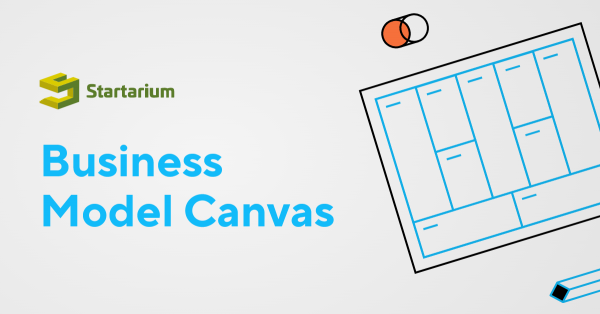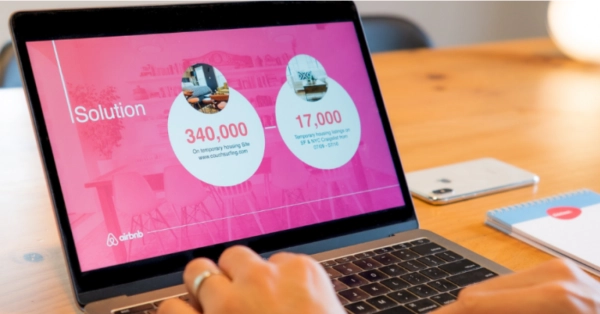The value proposition describes the value you bring to your customers in a concise, relevant and simple way. Find out how to use a Canvas to make it clear

As the term suggests, your value proposition describes the value you bring to your customers. Investopedia defines it as "the value a company promises to deliver customers should they choose to buy their product" a concise, easy-to-understand statement that provides clarity on the product's purpose, benefits, and differentiators.
That is why, if correctly written, it is also used on the presentation website, in any communication with customers, on social media, with potential partners and investors. Furthermore, parts of it are also included in the Business Model Canvas, which has dedicated sections for the value proposition and customer segments.
Why is the value proposition important?
First of all, it will help you to correctly identify the customer segments you target and the needs you cover with your product/service. It will also be helpful for outlining the most important elements of your solution that solves your customers' problems. Thirdly, it helps you achieve the product/market fit.
The value proposition should explain: what service/product you have to offer, who your customers are, how your service/product differs from others on the market, and how it benefits the customers who use it.
The value proposition:
-
is not a slogan. For example, Nike's slogan is "Just do it", while its value proposition is worded as follows: "To bring inspiration and innovation to every athlete in the world";
-
It is not an aspirational phrase that reflects the company's vision for the coming years (so "we want to become market leaders on our segment in the next 20 years" is not a value proposition);
-
It answers the questions What?, Why?, How? and For whom?;
-
It can be created by filling in the blanks in the sentence below:
[Name of your product] is [what it actually is] for [who your target customers are]. With it you will be able to solve [what problem your product solves] by [the solution you propose for that problem]
Write it right with the Value Proposition Canvas
The Value Proposition Canvas is the industry-standard tool that helps you ask the right questions about your value proposition. It is divided into two sections: one where the customers and their needs are analyzed, another where the product and how it meets the needs are analyzed.
-
Job to be done: what is the customer trying to accomplish (either in their personal or professional life)?
-
Pains: what obstacles are they facing? What are the main difficulties?
-
Gains: what would make the customer's life easier, so that they could complete the task?
-
Gain creators: what can you offer the customer so that they feel that they have something to gain from that?
-
Products & services: What are the services and/or products you can offer your customers so that they fulfill their task?
-
Pain relievers: How can you help your customer in a way that makes their job easier? What problems do you solve with your product/service?
Tips & Tricks:
-
When you fill out the canvas, always start with the part dedicated to the customer, not the one dedicated to your product. The need usually arises before the solution.
-
When analyzing the customer's needs and problems, be careful about the things you assume.
-
It is important to find out in an objective way what their lifestyle is (even outside the problem you are addressing) - what it looks like from a socio-demographic point of view. (spoiler alert: segment "20-45 years old, living in a city, university studies, average or higher income" is not specific enough)
-
Use the information you gather to create personas, go into detail in describing them, so you can anticipate questions/obstacles they might encounter. Also think about the emotional/rational decisions they might make about the problem you're trying to solve.
-
Once you have a better understanding of the customer's behavior, you can move on to building the product based on what you’ve noticed in the "Problems" and "Advantages" section.
-
After filling in the canvas, evaluate to what extent the two areas (customer and product) overlap and if you need to optimize/modify what you want to do.
PUT IT INTO PRACTICE
Create a canvas in Startarium
Use the free Startarium tool to create your first draft
What questions can you ask yourself to figure out if you've arrived at the right value proposition?
-
Is it a vague statement, like "The best product in category x"?
-
Is it similar to other competitors/companies in the industry?
-
If you replace your company name with the name of another company in the field, does it make a difference?
-
Does it say something about you (expertise, aspirations) or the value you provide to your customers?
Here are some examples of value propositions of other companies:
-
Digitail is a specialized veterinary software that can help a clinic attract more customers, increase the clinic's revenue and save time.
-
Kinderpedia is a simple and friendly software solution dedicated to kindergartens and schools that securely covers all planning, administration and parents communication activities.
-
Medicai is an online imaging platform where doctors can collaborate directly in the cloud with each other and with their patients, and the Artificial Intelligence technology accelerates the doctors’ work.
-
Xvision is an application that automatically analyzes CT images and helps doctors interpret the results with the help of artificial intelligence.
-
Skillshare - Learn a New Skill Each Day
-
Shopify - Shopify is everything you need to sell everywhere.























